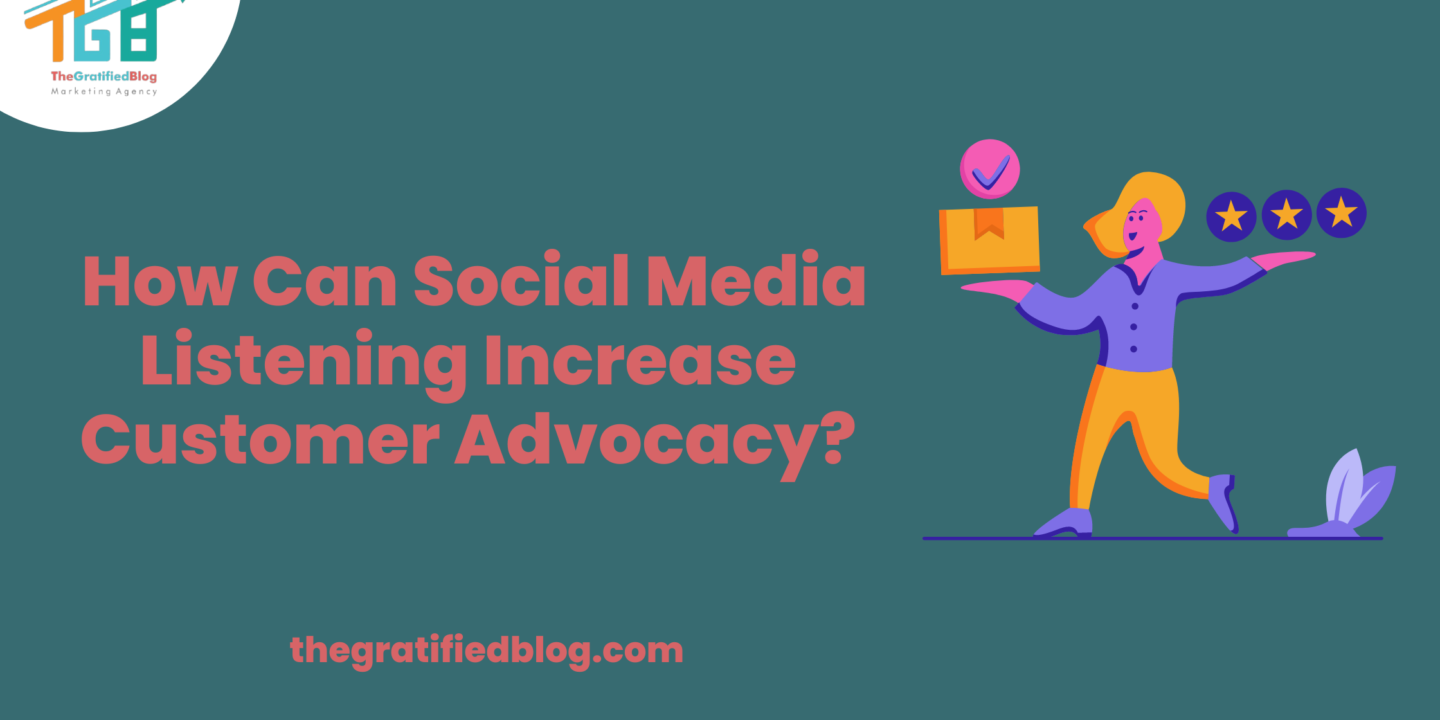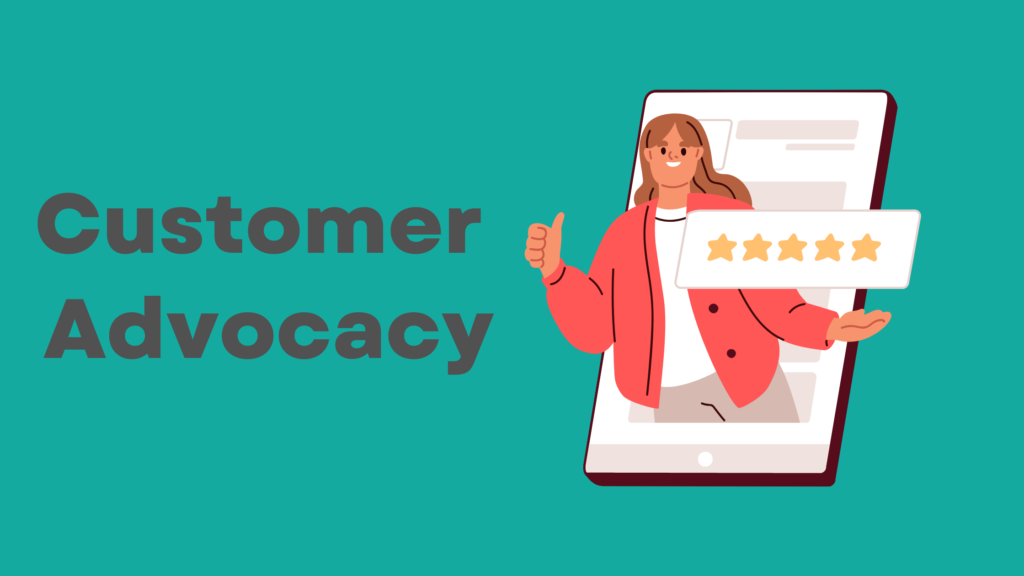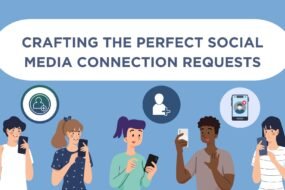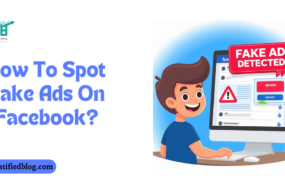
In the bustling landscape of social media, where conversations flow freely, and opinions are shared in real time, businesses have a unique opportunity to harness the power of social media listening to bolster their customer advocacy efforts. In this digital age, understanding “How can social media listening increase customer advocacy?” has become a paramount question for brands striving to connect with their audience on a deeper level.
So, In this blog, we delve into the intricacies of social media listening, explore the concept of customer advocacy, examine the nexus between the two, and provide actionable strategies for businesses to leverage social media listening to cultivate enthusiastic advocates.
So, let’s get started:
Understanding Social Media Listening
Definition
Social media listening, also called social media monitoring, involves tracking and analysing conversations, mentions, and trends across various social media platforms to understand what people say about a brand, product, or topic.
Importance
- Insight Generation: It provides valuable insights into customer preferences, opinions, and sentiments, helping businesses understand their audience better.
- Reputation Management: Social media listening allows businesses to monitor their online reputation and quickly attend to any negative feedback or criticism concerns.
- Competitive Analysis: By tracking competitors’ mentions and activities, businesses can gain competitive intelligence and identify areas for improvement.
- Crisis Management: Early detection of potential crises or issues enables proactive measures to mitigate risks and protect the brand’s reputation.
- Customer Engagement: Engagement with customers via social media platforms. Based on their conversations and feedback, they foster meaningful relationships and enhance brand loyalty.
Tools and Techniques for Social Media Listening
- Hootsuite: It is an all-inclusive platform for managing social media that permits users to oversee various social media channels, schedule posts, and interact with their audience. It offers keyword tracking, sentiment analysis, and customizable dashboards for analyzing social media metrics.
- Sprout Social: Sprout Social is a user-friendly social media management and listening tool with robust analytics and reporting capabilities. It offers features like real-time social monitoring, keyword tracking, sentiment analysis, and customer engagement tools to help businesses effectively understand and engage with their audience.
- Mention: Mention is a robust tool for monitoring social media activity. It allows users to monitor references to their brand, competitors, and industry keywords across various online channels. It offers real-time alerts, sentiment analysis, and customisable reporting to help businesses stay informed about relevant conversations and trends.
- Brandwatch: Brandwatch is an advanced social media listening and analytics tool that offers profound insights into consumer behaviour, market trends, and brand sentiment. It provides advanced sentiment analysis, influencer identification, and competitive benchmarking to help businesses make data-driven decisions and optimize their social media strategy.
- Buffer: Buffer is a widely used social media management tool that permits users to schedule posts, monitor performance metrics, and interact with their audience on various platforms. Multiple social media platforms. While primarily known for its scheduling capabilities, Buffer offers primary social media listening features such as keyword tracking and mentions monitoring to help businesses stay connected with their audience.
By leveraging these tools, businesses can harness social media listening to acquire valuable insights, manage their online reputation, engage with their audience effectively, and ultimately increase customer advocacy.
Now that you’re familiar with social media listening, let’s delve into customer advocacy.
Exploring Customer Advocacy

Definition
Customer advocacy refers to the actions and behaviors Of happy customers actively endorsing and recommending a brand, product, or service to others.
Significance:
- Trust and Credibility: Positive recommendations from satisfied customers are highly trusted by potential buyers, contributing to the credibility and reputation of the brand.
- Cost-Effective Marketing: Customer advocacy is a form of word-of-mouth marketing, which is often more cost-effective and impactful than traditional advertising methods.
- Long-Term Growth: Building a base of loyal advocates can lead to sustainable business growth, as loyal customers are inclined to make additional purchases repeatedly and refer others to the brand.
- Competitive Advantage: Brands with solid customer advocacy enjoy a competitive advantage in the marketplace, benefiting from positive word-of-mouth and higher customer retention rates.
Types of Customer Advocacy
- Word-of-mouth: Through verbal communication, customers share positive experiences and recommendations with friends, family, and acquaintances.
- Testimonials: Customers provide written or recorded testimonials expressing their satisfaction with a product or service, often shared on the brand’s website or social media.
- Reviews: Customers share their opinions and experiences by writing reviews on third-party review platforms, such as Yelp, Google Reviews, or TripAdvisor.
Impact on Brand Perception and Loyalty
Brand Perception:
- Positive Advocacy: Positive recommendations and testimonials enhance brand perception, positioning the brand as trustworthy, reliable, and customer-centric.
- Negative Advocacy: Negative reviews or complaints can damage brand reputation and perception if not addressed promptly and effectively.
Customer Loyalty:
- Repeat Purchases: Satisfied customers who become advocates will likely make repeat purchases and continue doing business with the brand.
- Referrals and Acquisition: Advocates actively refer friends, family, and colleagues to the brand, contributing to customer acquisition and growth.
- Emotional Connection: Advocates feel a strong emotional connection to the brand, leading to higher levels of loyalty and engagement over time.
Now that you’ve thoroughly grasped customer advocacy let’s move on to the central query, “How can social media increase customer advocacy?”
How Can Social Media Listening Increase Customer Advocacy?

Here are five clear points explaining how social media listening can increase customer advocacy:
Understanding Customer Needs And Preferences
Social media listening allows businesses to gather insights into what customers say, feel, and desire. Companies can enhance their comprehension of customers’ requirements and preferences by analysing conversations, sentiments, and trends on social media platforms.
When businesses effectively address these needs and preferences, customers feel valued and more likely to advocate for the brand.
Proactive Engagement And Support
Businesses can interact with their audience through social media, listening to customers proactively. By promptly responding to inquiries, feedback, and concerns shared on social media, companies show that they care about their customers’ experiences.
This proactive engagement resolves issues quickly and fortifies the connection between the brand and its clientele, leading to increased advocacy as customers feel supported and valued.
Building Trust And Credibility
Businesses can demonstrate transparency and authenticity in customer interactions through social media listening. By acknowledging both positive and negative feedback openly and honestly, companies build trust and credibility among their audience.
Customers are inclined to endorse a brand they trust and perceive as genuine, making social media listening a powerful tool for increasing customer advocacy.
Leveraging User-Generated Content
Businesses can use social media listening to recognise and leverage user-generated content (UGC) created by satisfied customers. By sharing UGC, such as favourable reviews, testimonials, and user-created posts, companies amplify their advocates’ voices and showcase real-life experiences with their products or services.
This authentic content resonates with other customers and encourages them to advocate for the brand.
Identifying And Empowering Brand Advocates
Social media listening helps businesses identify loyal customers who frequently engage with and promote the brand online. By recognising and empowering these brand advocates, companies can amplify their advocacy efforts and turn them into ambassadors for the brand.
Brand advocates advocate for the brand themselves and influence others to do the same, creating a ripple effect of advocacy across social networks.
FAQs
Q1. How does social media listening contribute to enhancing customer advocacy?
A. Social media listening enables businesses to understand customer sentiments, preferences, and needs, allowing them to tailor their products and services accordingly. Businesses foster trust and credibility by engaging with customers effectively and addressing their concerns promptly, leading to increased customer advocacy.
Q2. What role does social media monitoring play in identifying brand advocates?
A. Social media monitoring helps businesses identify loyal customers who frequently engage with and promote the brand online. By recognising and empowering these brand advocates, companies can amplify their advocacy efforts and encourage others to advocate for the brand.
Q3. Can social media listening help in leveraging user-generated content for customer advocacy?
A. Absolutely! Social media listening enables businesses to pinpoint and leverage user-generated content (UGC) created by satisfied customers, such as favourable reviews and testimonials. By sharing this authentic content, companies showcase real-life experiences with their products or services, encouraging others to advocate for the brand organically.
Conclusion
Now that you know the answer to the question, i.e. How can social media listening increase customer advocacy? Then why still wait? Start using social media listening tools today, and see what improvement you can make to your strategy.
If you still have any questions related to the blog, please leave them in the comment section. We’re delighted to address your inquiries.
Thanks for reading 🙂








No Comments